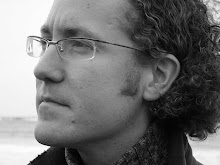How we perceive spatiotemporal continuity across edited sequences of film is clearly a major interest of mine (hence the blog name!). Several theorists have written about this topic going all the way back to Munsterberg (1916), Hochberg & Brooks in the 70s and early 80s, and the pioneering Change Blindness studies of Levin & Simons in the 90s. In my thesis I discussed in depth the paradox of perceiving continuous visual scenes across visually discontinuous shots. For instance, why is a series of shots all filmed from the same side of an action such as a conversation perceived as being spatially continuous where as a shot that crosses to the other side of the action leads to spatial confusion? This filming and editing convention is known as the 180 Degree Rule. You can see clear demonstrations of it in this video:
Now a recent paper on the perception of continuity in film by Berliner and Cohen (2011) wonderfully brings together psychological evidence and film theory to provide an accessible and insightful overview of the topic. I highly recommend this article if you are looking for a quick reader on continuity perception.
Berliner and Cohen (2011) clearly outline the psychological motivation for the continuity editing rules but also acknowledge the role of intuition and creativity of filmmakers in choosing the right techniques to convey their particular story.
"Continuity conventions have remained relatively stable for about ninety years. The primary reason for their stability is not, as some scholars think, Hollywood’s marketing dominance or other externalities but rather that the early filmmakers who first developed the conventions were guided by their intuitive understanding of space perception and the reactions of cinema spectators. Just as expert pool players learn— not through direct study but intuitively, through trial and error—the principles of Newtonian physics that govern pool playing, as well as matter and energy generally, the filmmakers in the early twentieth century who first developed the conventions of the classical editing system, without directly studying psychology, discovered the structure of human perception."
Berliner, T. & Cohen, D. J. (2011) The Illusion of Continuity: Active Perception and the Classical Editing System.”Journal of Film and Video 63.1: 44-63.




1 comment:
Nice post! Could sound alone be used to reorient the viewer?
Post a Comment